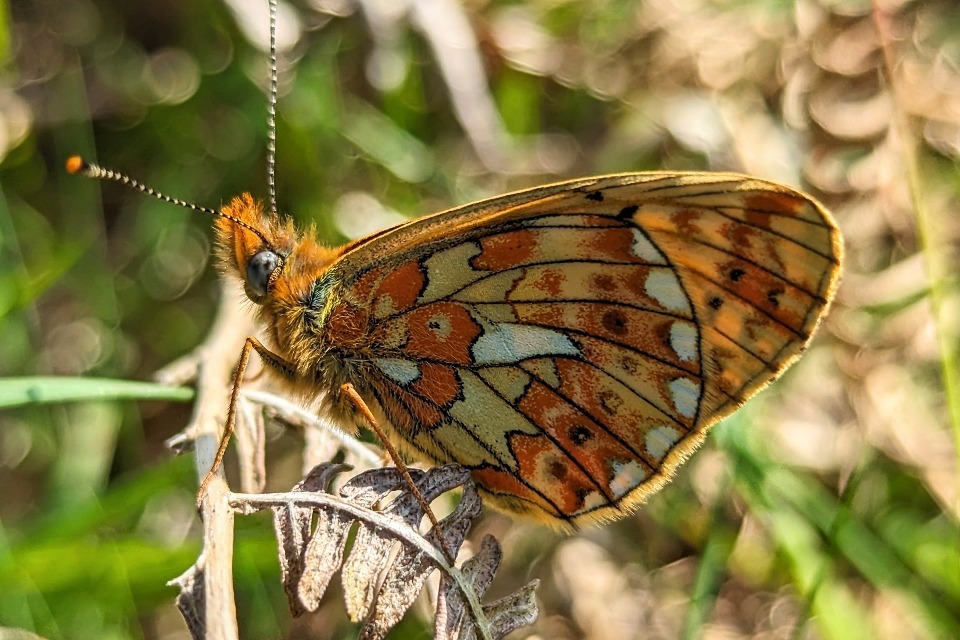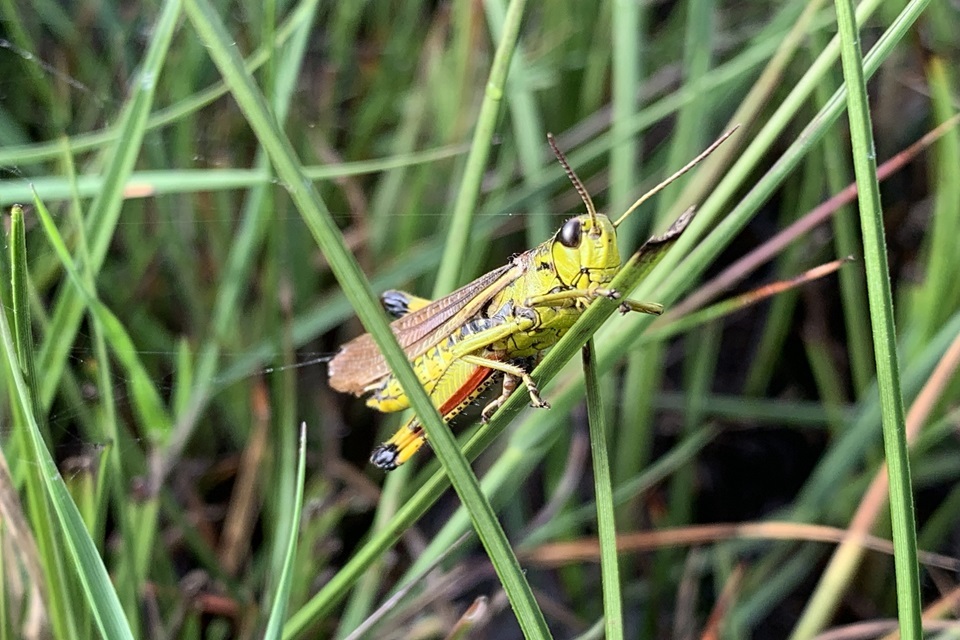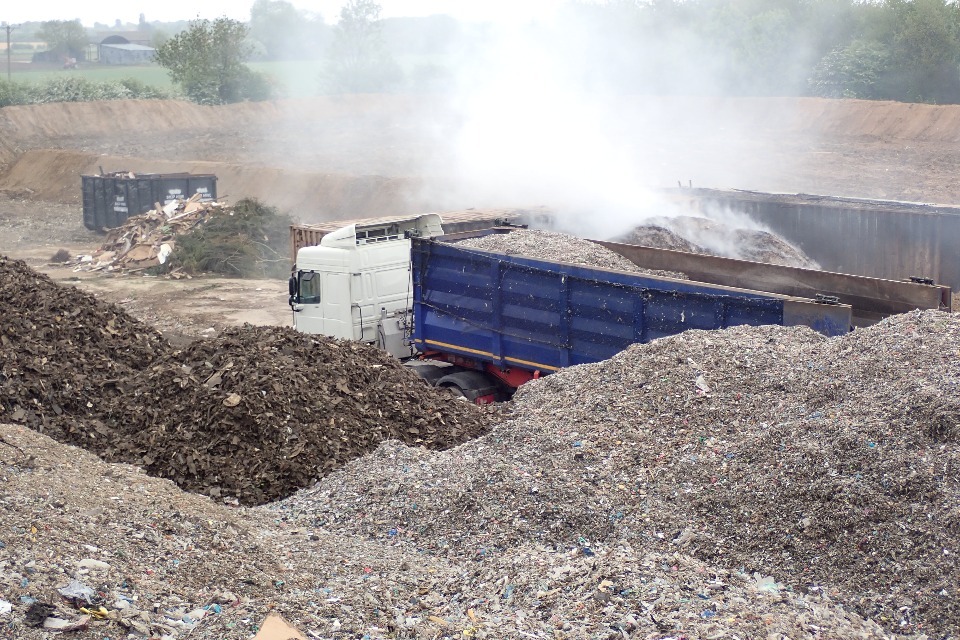-
Threatened Species Recovery Actions, a guide for supporting the recovery of more than 1,000 threatened species published
-
Natural England Chair calls for a redoubling of efforts with time running out to halt the decline of nature
The results of a multi-million pound investment in nature have been revealed for the first time today (Wednesday 13 August), alongside the launch of a new guide for supporting the recovery of more than 1,000 species threatened with extinction.
The £13 million Species Recovery Programme’s Capital Grants Scheme ran from August 2023 to March 2025, and saw Natural England invest in targeted conservation efforts that gave species such as water vole, oystercatcher, lady’s slipper orchid, hazel dormouse and Atlantic salmon a chance to flourish.
From the Lizard Peninsula in Cornwall to Cumbria and Northumberland, 63 different projects involving 78 partners have transformed landscapes and supported the recovery of 150 species, many of which were on the brink of national extinction, through research, captive breeding, habitat creation, and conservation translocations.
Across the projects, more than 15,000 individual animals and plants were translocated to expand species territories, as well as captive breeding more than 12,000 individuals, including invertebrates, mammals and birds.
The successes of the scheme included the first wild-hatched red-billed chough chick in Kent for over 200 years, the successful reintroduction of black grouse to the North Yorkshire Moors, and the return of the large marsh grasshopper to the Norfolk Broads after an 85-year absence.
To further support nature conservation a Threatened Species Recovery Actions guide is also being published today to support the recovery of over a thousand of England’s most threatened species. From the small pearl-bordered fritillary butterfly, corncrake and natterjack toad to smaller organisms like miniscule lichens, the guide sets out for the first time what action conservationists need to take to recover wildlife at an individual species level. This could include the creation of habitats with late flowering plants to support the Shrill Carder bee or the creation of fish-rich reedbeds to support bittern.
To mark the success of the investment programme and to highlight the need to drive forward species recovery efforts there will be a celebration event today held at Brandon Marsh with Warwickshire Wildlife Trust, where the once rare Eurasian bittern is making a recovery. Chair of Natural England Tony Juniper will give a keynote speech where he will call for more concerted action to drive species recovery with time running out to reverse nature’s decline.
Tony Juniper, Chair of Natural England, is expected to say
“A rising number of Nature recovery projects, both large and small, are making a huge difference up and down the country. The success of this programme is an example of how much we can do when we take a joined up, collaborative approach to restoring the natural world.
“We know we can turn round species decline and improve ecosystems with the right targeted actions, the drive and the funding.
“But time is running out fast – turning round nature’s decline needs to be a collective endeavour, so this is not just the preserve of dedicated specialists. Nature recovery work needs more projects, more volunteers and more money to flow from all sources, particularly the private sector. It will also need to go hand in hand with improved environmental quality, including through reduced pollution.
“The publication of the government’s revised Environmental Improvement Plan in the autumn will be a key moment. We will need to see increased ambition on species recovery, particularly looking at what can be done on some of our lost species. In the coming years, habitat management and creation alongside species reintroductions could be a real game changer for the health of ecosystems and help us achieve the country’s legally binding targets.”
The Species Recovery Programme has also seen the creation of conservation infrastructure which will benefit wildlife into the future. Projects have created or enhanced over 2,400ha of wildlife-rich habitat for species to thrive, including 143 leaky dams to support species like Atlantic salmon, white-clawed crayfish and freshwater pearl mussel while also reducing flood risk and improving water quality. 633 new safe breeding areas have been created for otter, dormice, bats, willow tits and other birds
Beyond direct species benefits, the scheme has helped bring thousands of people closer to nature. Over 80,000 members of the public participated in 465 educational events and activities, and volunteers contributed nearly 100,000 hours of conservation work worth over £1 million. The scheme has also offered a boost for the economy by supporting the equivalent of 60 full time jobs in conservation.
Natural England is planning to extend the Species Recovery Programme delivery window for up to four years, running concurrently between 26/27 – 29/30 to take forward the actions detailed in the Threatened Species Recovery Action guide.
Threatened Species Recovery Actions guide can be found on our Access to Evidence page.
It reflects the expertise of 40 partner organisations which contributed to it and will help to pave the way to delivering the legally-binding target to reduce the risk of species’ extinction by 2042.
ENDS
NOTES TO EDITORS
· Natural England funding for this Species Recovery Programme Capital Grant Scheme brought a match value of over £6.5 million from partner organisations and volunteer value.
/////
QUOTES
Gina Rowe, Landscape Recovery Development Manager at Warwickshire Wildlife Trust, said
“Warwickshire Wildlife Trust were delighted to have secured a grant for our ambitious partnership project ‘Reviving Our Wetlands’ from Natural England’s Species Recovery Programme, and to host the celebration event at Brandon Marsh Site of Special Scientific Interest, one of our key project sites.
“The project has brought a tremendous boost for four nationally threatened species in Warwickshire, Coventry and Solihull and we will continue the work and monitoring to ensure there is a legacy, and real gains for the four species involved and the habitats they need.
“Water Vole now have access to a further 13.7 km of canal banks; Willow tit has 2 ha of new wetland and woodland and 100 nesting logs; Bittern has 1.5 ha of deep pools and reedbeds; White-clawed crayfish will have 2 refuge pools, and we look forward to these species living and breeding in these newly created habitats. Over 75 volunteers have been involved.
“Many thanks to all our partners, landowners, volunteers and staff involved, including Brandon Marsh Conservation Volunteer team, Canal & River Trust, Coventry City Council, University of Warwick, and Tame Valley Wetlands Volunteer Force, for making this such a successful project.”
Steve, a volunteer with the ‘White Cliffs and White Chalk’ National Trust project said
“It’s been a real delight to meet and benefit from the knowledge of the professionals involved with the project, who have been so generous in sharing their knowledge.
“This and a feeling of real engagement with an amazing natural environment has been a huge psychological boost for me, especially after the isolation of COVID and only recently moving to the area.”
/////
SUMMARY OF SELECTED PROJECTS
Hawkshead bee in Hastings
The species highlight of the project was the discovery of Andrena fulvago (Hawksbeard Bee) by ecologist Andy Phillips. This rare species had not been recorded in Hastings for over 100 years. The wildflower areas created by Groundwork South will help support this rare bee species, along with many others.
Chough in Kent
The successful reintroduction of Chough in Kent for the first time in over 200 years following an extensive captive breeding programme and supervised release and monitoring. The success of this project, carried out by Wildwood Trust, Kent Wildlife Trust, and Paradise Park was demonstrated by first wild hatched chick in 2024, birds nested again in 2025.
Black grouse on the North York Moors
The successful translocation and reintroduction of breeding Black Grouse on the North Yorks Moors saw new nests hatched and 15 birds fitted with radio transmitted to monitor movements and health. This project will also release further individuals this year as part of the grant extension.
Adders in Berkshire
Berks, Bucks & Oxon Wildlife Trust installed two adder tunnels beneath the Old Thornford road in Berkshire which bisected Greenham and Crookham commons. The tunnel was completed in March 2024 and additional habitat enhancements were made to help direct adders towards the tunnel entrances instead of the road. In May 2025 trail cameras installed at the tunnel entrance caught evidence of an adder using one of the tunnels.
Horseshoe bats in Sussex
Vincent Wildlife Trust has worked on three disused buildings to make them ideal for bat breeding. Their project Horseshoes Heading East focussed on connecting up suitable breeding and hibernation places for greater horseshoe bat across Sussex. Greater horseshoe bats at one of the sites have successfully bred, with mums and pups in the incubator and a new attic space.
Waders in Essex
The RSPB and Essex Wildlife Trust worked together across wet grassland, grazing marsh, reedbeds and saline lagoons in the Blackwater and Colne Estuary to install predator fences and water control features to make the site even better for breeding waders. The works have already proved successful with a lapwing nest spotted this spring and 6 other lapwing were seen displaying, as well as a pair of redshank.
Lady’s slipper orchid in Yorkshire
Natural England has worked with Royal Botanic Gardens Kew and Plantlife for thirty years collecting thousands of seeds, conducting germination trials and growing on seedlings to try and bring back our most impressive and rarest orchid, the lady’s slipper. Now, with Yorkshire Wildlife Trust also part of the partnership, the first known example of this rare and beautiful plant naturally propagating in the wild has been recorded.
Avocet in Worcester
Upgraded islands within the lakes at the reserve at Upton Warren, which had eroded over time, have received positive responses from the visiting birds, with 57 Avocet recorded on the 28th March ’25. This is a fantastic outcome given the short timeframe over which this project has been delivered by the Worcestershire Wildlife Trust.
Water voles in Northamptonshire, Cheshire, Nottinghamshire and Warwickshire
Four SRPCGS projects have created habitats for water voles in Northamptonshire, Cheshire, Nottinghamshire and Warwickshire including creating new bankside habitat, wetlands and ponds, and planting hedges to provide cover and food plants. Warwickshire Wildlife Trust, aided by contractors and volunteers, installed twenty water vole ‘motels’ along the banks of the canal in Coventry to provide safe resting and feeding places. In addition, more than 420 water voles were captive reared and released to help increase population numbers and distribution.
Atlantic salmon and pearl mussels in Cumbria
West Cumbria Rivers Trust, working with the Freshwater Biological Association delivered river habitat improvements including removing barriers to the passage of Atlantic salmon. This also benefitted pearl mussels, as their larvae spend around 9 months of their lifecycle on the gills of either salmon or trout, before dropping off into gravels to continue their growth. 2475 juvenile freshwater pearl mussels were released under licence into streams in Cumbria to bolster the populations.







